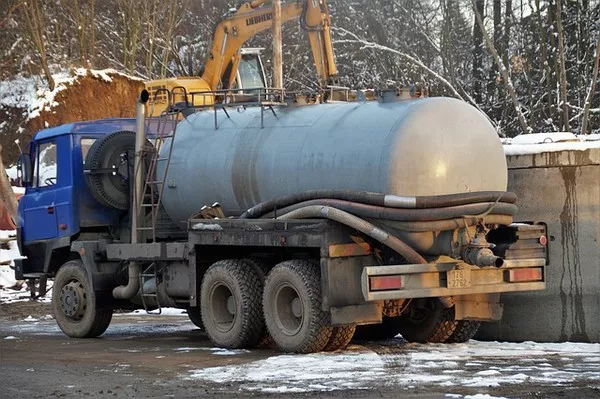Sewage treatment is a critical process that safeguards public health and the environment by effectively managing wastewater generated by our cities and communities. While the treatment plant plays a pivotal role in purifying sewage, it’s equally essential to understand what happens to sewage after treatment. This article explores the journey of sewage post-treatment, shedding light on the various ways treated sewage is reused, discharged, and its impact on the environment.
The Sewage Treatment Process
Before delving into what happens after treatment, it’s essential to briefly understand the sewage treatment process. Sewage treatment typically involves a multi-step process that includes primary, secondary, and sometimes tertiary treatment stages. Primary treatment involves the removal of large solids and debris from the sewage. Secondary treatment focuses on the biological breakdown of organic matter, while tertiary treatment further refines the water quality through additional processes like filtration or chemical treatment.
Once sewage undergoes these treatment stages, it becomes treated effluent, which can be handled in various ways, depending on the specific treatment facility and local regulations.
Discharge into Natural Water Bodies
One common method for disposing of treated sewage effluent is to release it into natural water bodies like rivers, lakes, or oceans. This is a regulated and monitored process to ensure that the effluent meets strict quality standards. The released water should not harm the receiving water body or its ecosystem.
Before discharge, the treated sewage undergoes extensive testing to ensure it meets regulatory requirements. Parameters such as chemical oxygen demand (COD), biological oxygen demand (BOD), suspended solids, and nutrient levels are closely monitored. If the effluent surpasses acceptable limits, additional treatment steps are implemented.
It’s important to note that even after treatment, discharged sewage can have an impact on the environment. Elevated nutrient levels, such as nitrogen and phosphorus, can lead to water quality issues like eutrophication, causing harmful algal blooms and oxygen depletion.
Agricultural Irrigation
In some regions, treated sewage effluent is used for agricultural irrigation. This practice provides an alternative source of water for crop cultivation, reducing the demand for freshwater resources. However, this approach requires stringent monitoring to ensure that the effluent does not contain harmful pathogens or contaminants that could impact food safety.
The use of treated sewage in agriculture is subject to regulations and guidelines to safeguard both crop quality and public health. Properly treated effluent can be a valuable resource for sustainable agriculture, as it contains essential nutrients that benefit crops.
Industrial Reuse
Industries that require large quantities of water for their processes often employ treated sewage effluent as a source of water. Prior to reuse, the effluent may undergo additional treatment steps to meet the specific quality requirements of the industrial process. Industries benefit from this practice by reducing their freshwater intake, contributing to water conservation efforts.
Industrial reuse of treated sewage requires rigorous monitoring and adherence to environmental regulations. Industries must ensure that the effluent is compatible with their processes and does not introduce contaminants that could compromise product quality or employee safety.
Groundwater Recharge
In regions facing water scarcity or groundwater depletion, treated sewage effluent can be a valuable resource for recharging aquifers. This involves the injection of treated effluent into underground aquifers, allowing it to replenish groundwater supplies over time.
Groundwater recharge can be a sustainable way to store water for future use and enhance water availability in areas with limited freshwater resources. However, careful monitoring is essential to prevent contamination of the aquifers and ensure that the recharged water meets water quality standards.
Challenges and Concerns
While the various post-treatment options for sewage effluent offer significant benefits, they also raise several challenges and concerns that must be addressed:
Environmental Impact: Discharging treated sewage into natural water bodies can still have ecological consequences, especially if nutrient levels are not adequately managed. Efforts to mitigate these impacts are crucial.
Public Health and Safety: Whether used for irrigation or industrial processes, ensuring the safety of treated sewage effluent is paramount. Strict monitoring and adherence to regulations are necessary to protect public health.
Infrastructure and Investment: Developing the infrastructure required for wastewater treatment and distribution of treated effluent can be costly. Governments and communities must invest in the necessary facilities to support these initiatives.
Regulatory Compliance: Stringent regulations are essential to govern the handling and use of treated sewage effluent. Regulatory bodies must enforce these standards to prevent environmental harm and protect public health.
Conclusion
The journey of sewage after treatment is a multifaceted process that involves careful consideration of environmental, public health, and economic factors. From discharge into natural water bodies to agricultural irrigation and industrial reuse, the responsible management of treated sewage effluent is vital for sustainable development.
Efforts to optimize treatment processes, reduce environmental impacts, and promote safe reuse are ongoing. As societies continue to grow and urbanize, addressing the challenges associated with sewage treatment and post-treatment management will be crucial for a cleaner and more sustainable future. By understanding the complexities of the sewage journey after treatment, we can make informed decisions to protect our environment and ensure the well-being of communities around the world.

